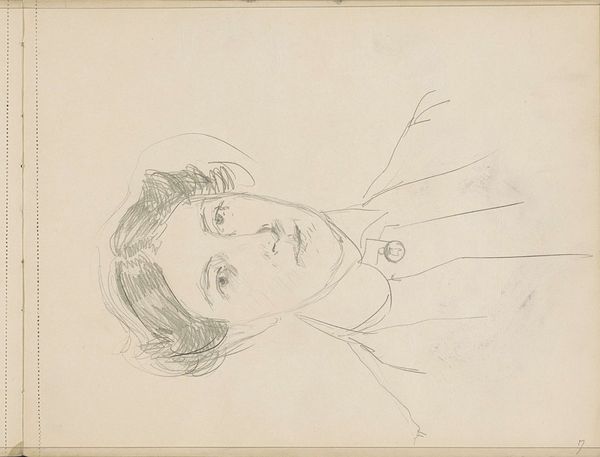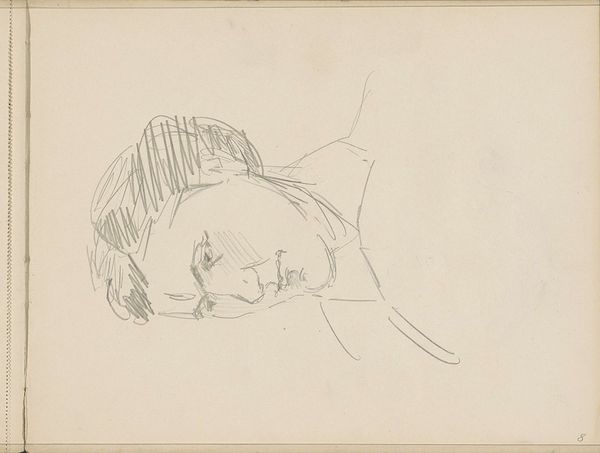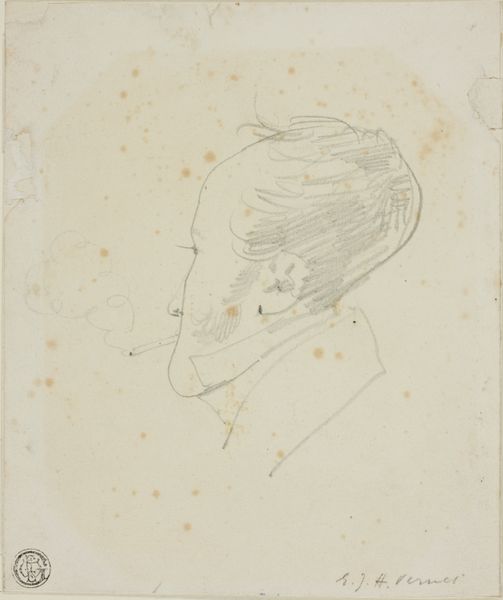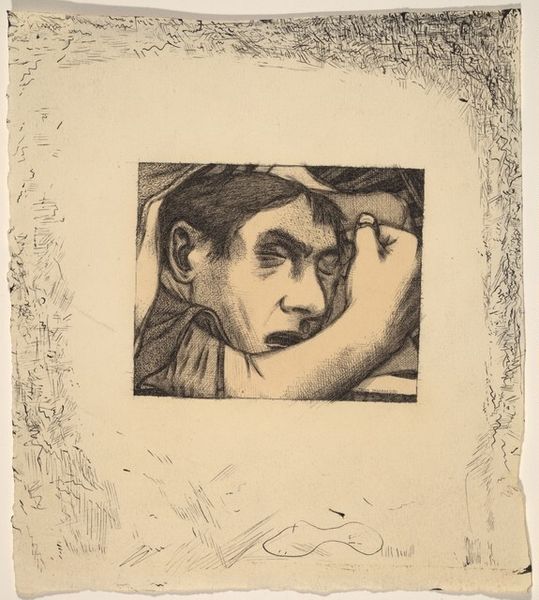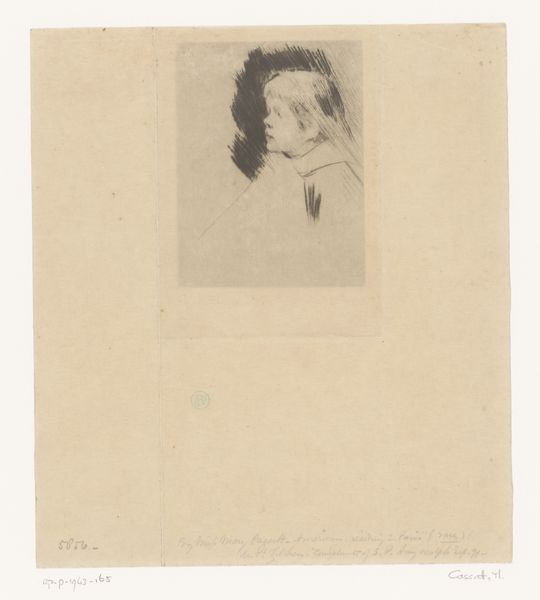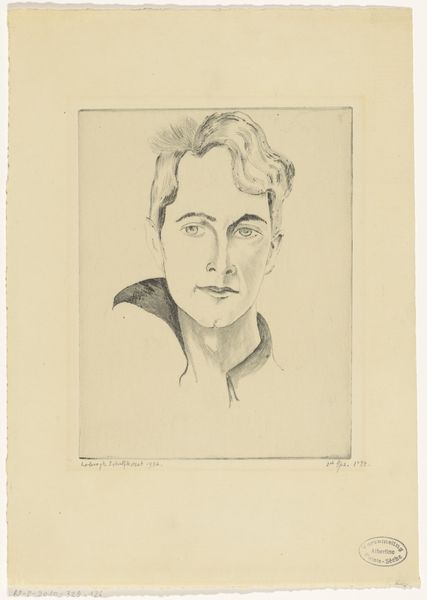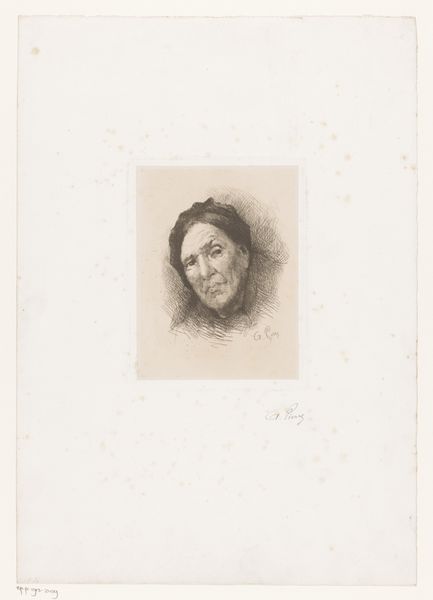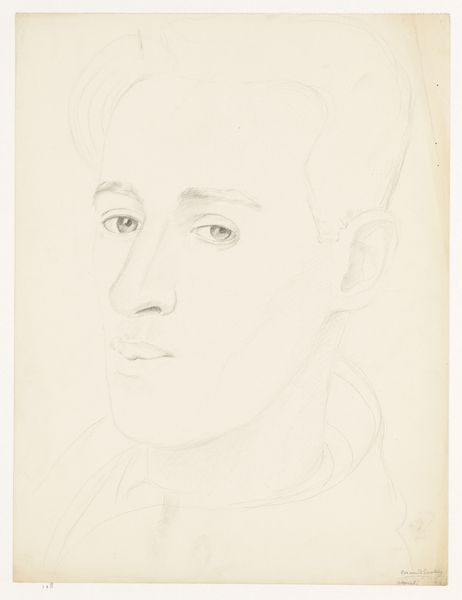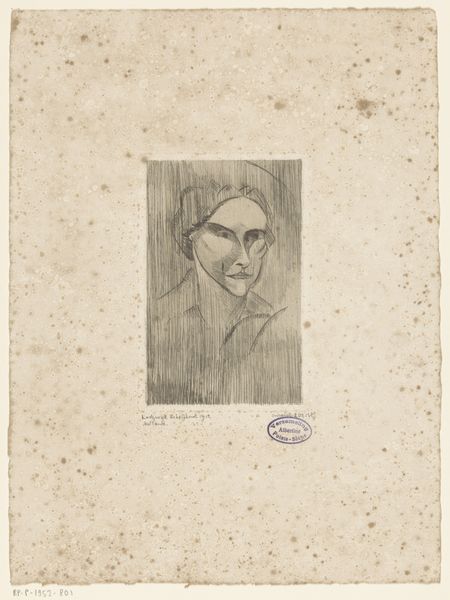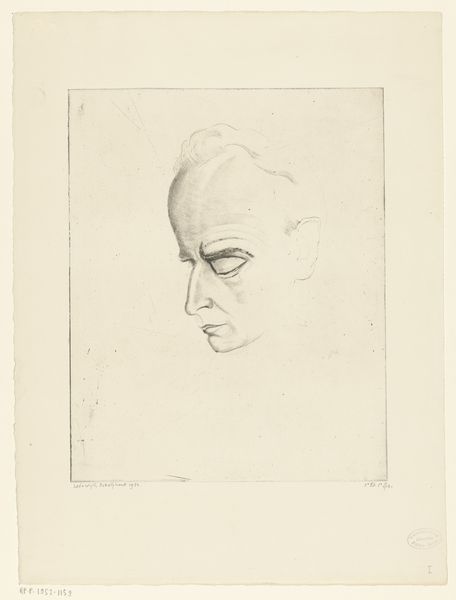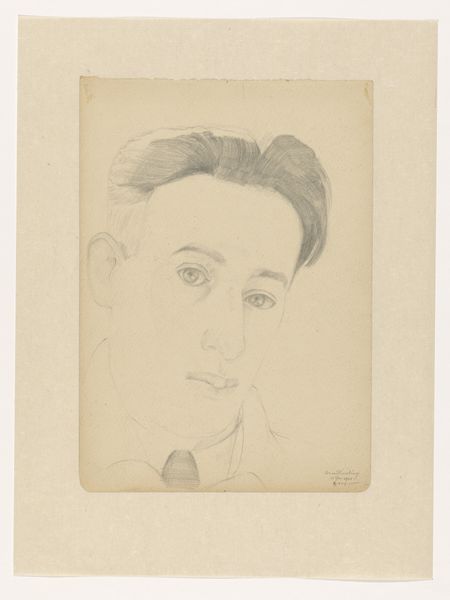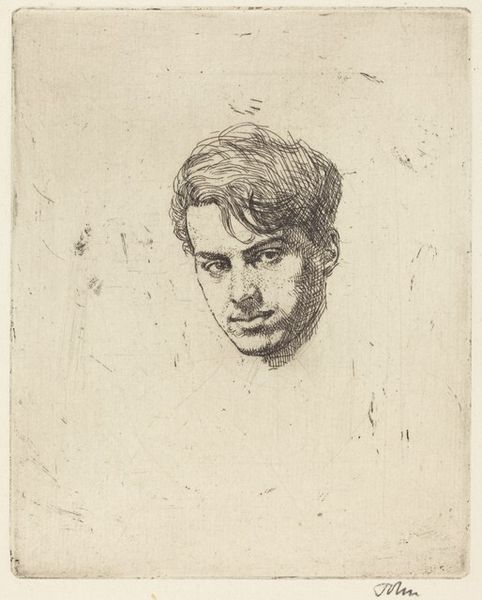
drawing, graphic-art, print, etching
#
portrait
#
drawing
#
graphic-art
# print
#
etching
#
figuration
#
portrait drawing
Copyright: National Gallery of Art: CC0 1.0
Curator: Before us we have Max Oppenheimer’s "Head of a Man," an etching print. What catches your eye first? Editor: Anomie. A quiet sense of being lost, maybe. His gaze is so introspective, and yet…absent. And the expanse of empty space around him—it’s like he’s adrift. A minimalist study of a soul in isolation, perhaps. Curator: Yes, the surrounding space is really notable. It creates a sense of emptiness, and that downward glance contributes to a feeling of melancholy, even defeat. Looking at it through the lens of symbolism, one could see that he represents alienation, a motif present throughout much of 20th-century art and culture, especially after the world wars. He is an archetype of displaced individuals, looking for home. Editor: Exactly! Like he's searching for a new foundation. It feels intensely psychological. The lines are so fragile, so tentative. Like a feeling barely held in check, on the precipice. It gives the drawing vulnerability. Curator: Indeed. The artist used etching to amplify a rawness. It offers not just a portrait but also the artist’s emotion channeled into that needle tracing his subject’s likeness. Considering the history, etching, as a method for printmaking, carries a legacy of artistic and social commentary. Editor: A historical echo, imprinted right into the lines. But it's also funny. I feel sympathy tinged with gentle mockery, looking at it. Is that cruel of me? Curator: Not at all, great art sparks unexpected reactions! Max Oppenheimer invites that contemplation, those complex feelings. Editor: True. He almost feels contemporary, timeless, doesn't he? I’m drawn in, challenged, and maybe a little comforted by sharing this guy's very quiet crisis. Thanks, Max! Curator: An affecting reflection on the lasting capacity of simple lines.
Comments
No comments
Be the first to comment and join the conversation on the ultimate creative platform.
